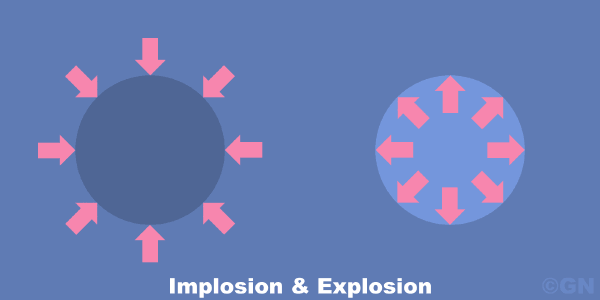

Such a structure would still fail catastrophically, though it wouldn't explode per-se. Every ounce of material launched to the moon costs far more in fuel costs than it costs in manufacturing costs.Įven though the dome is lightweight by structural standards, if it lands on a human, that human will still be squished, even in the 1/6th gravity of the moon. The moon doesn't (yet, and may never) have the industry to create these cables and panels from resources found on the surface or available to be mined. The dome structure needs to be lightweight, because its material was shipped from Earth. This is a dramatic difference in air pressure, and the dome is a large, complex structure made from the lightest high-tension materials possible: A vast network of cabling that holds in place the air-tight panels, and keeps the panels under enough pressure so that they don't fly apart from the pressure on the inside. Under normal operation, the colony hab dome expects 1 atm of air pressure inside, and nearly no pressure outside. The structure wouldn't explode, but it may fall on the colonists. You could have a meteor punch only a small hole at first, but the damage to the surrounding material causes it to grow as air rushes out, settling at your 1m diameter. In regards to point 1) yeah the flowing air can cause more damage, but likely only to the immediate area surrounding the impact.

Removing the air might cause the ceiling to collapse, but not explode outwards, it will implode inwards. If you don't do something like that and allow the pressure to decrease and air to vent, your dome will have LESS of a chance of exploding since fire needs oxygen to burn.Īnother consideration is that the dome might rely on the air pressure inside to keep it up supported. You can keep the pressure in the dome "stable" by having an oxygen leak fueling a raging fire, creating smoke and CO2 that replaces the previously breathable air. At half pressure the flow rate is still about 500,000 liters per minute though, so it doesn't slow down that much. Realistically you will lose pressure as the air vents from the dome, so it will take longer. Assuming the pressure stays the same in the dome, its will vent all 16 million liters in around 2 minutes - updated figures.


The volume of your hemisphere will be around 16 million liters. Here are some quick estimates so you can get an idea what this looks like:Īssuming a 20 meter radius dome (approx 132 feet wide) with a 1 meter hole and a shell that's 0.5 meters thick and is pressurized at 1 atm.Īccording to this site's tool - The flow rate will be about 10,000,000 liters per minute. Use the loss of pressurization and escaping atmosphere as something that hinders the efforts to repair the damage. If you need an "its gonna blow in 5 minutes!" story element, have the impact cause fires that are threatening the Fuel or Oxygen storage. Whether it was snipers missing the mark more often than they are used to, goaltenders watching their numbers implode, or players earning salaries that weren't equal to their on-ice production, last season was one that a few NHLers would like to forget.A 1 meter hole in a dome's superstructure is likely to severely damage something else below it. THE CANADIAN PRESS/AP-David Banks Chicago Blackhawks center Jonathan Toews celebrates his goal against the Dallas Stars during the first period of an NHL hockey game Thursday, Feb. Whether it was snipers missing the mark more often than they are used to, goaltenders watching their numbers implode, or players earning salaries that weren't equal to their on-ice production, last season was one that a few NHLers would like to forget. Chicago Blackhawks center Jonathan Toews celebrates his goal against the Dallas Stars during the first period of an NHL hockey game Thursday, Feb.


 0 kommentar(er)
0 kommentar(er)
